Abstract
Columbia-Presbyterian Medical Center's health care providers have access to alerts and interpretations generated by an Arden Syntax-based clinical event monitor. They have the opportunity to send comments to the clinical information services staff. Over a period of 26 months, they sent 126 comments. The comments were analyzed using the critical incident technique, resulting in a hierarchy of categories that summarizes user concerns. The majority of comments (65) indicated that the messages were actually (8) or at least potentially useful (57). A minority (28) indicated that they were unhelpful (27) or actually harmful (1). Another group (27) made suggestions or asked questions. The comments have been very helpful for the maintenance of Medical Logic Modules (MLMs) and the clinical event monitor itself.
Full text
PDF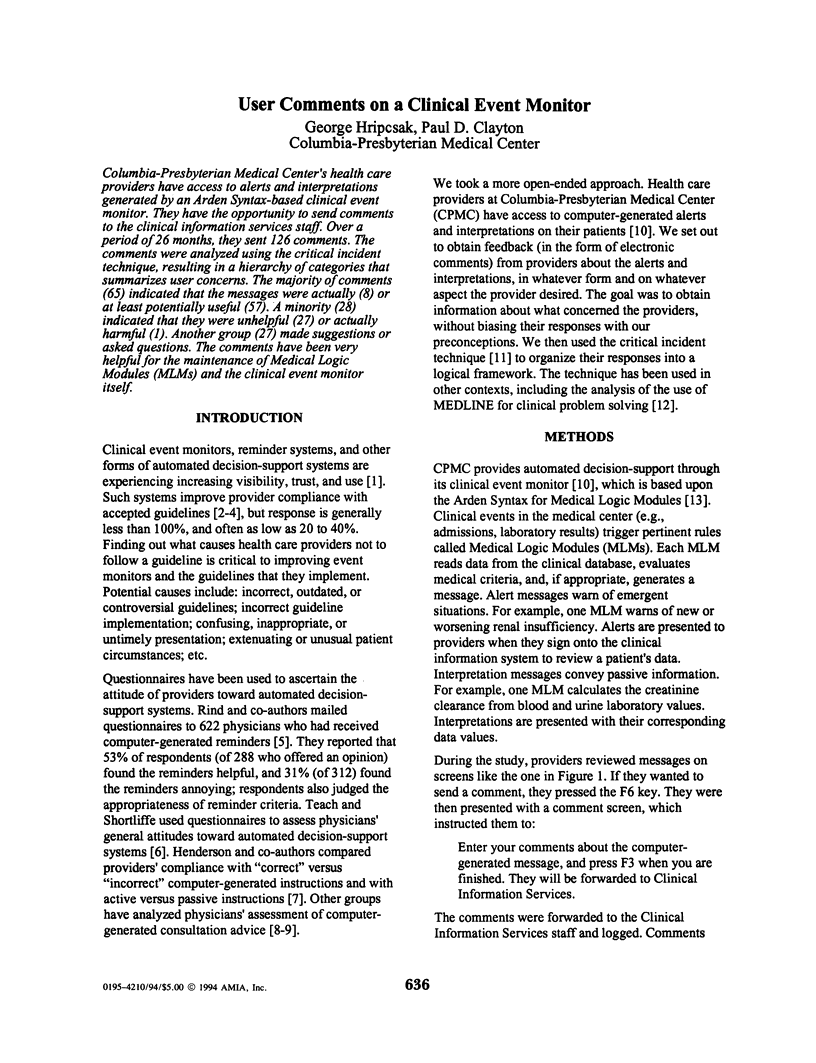
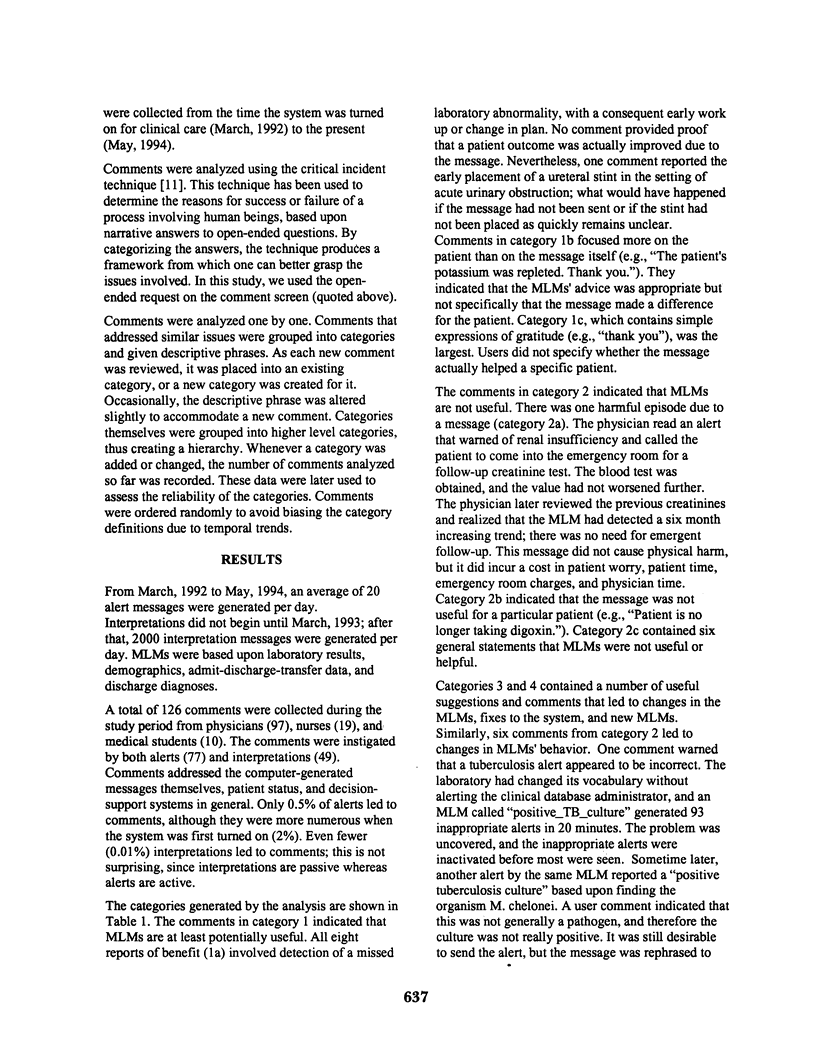
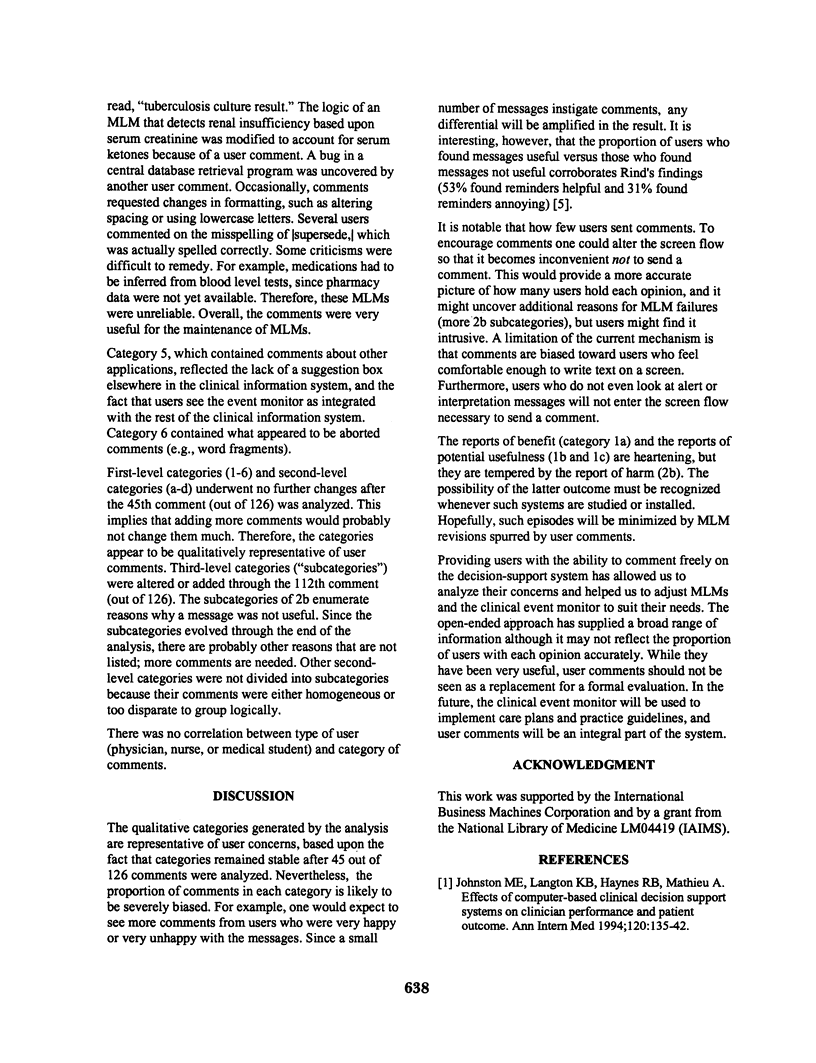
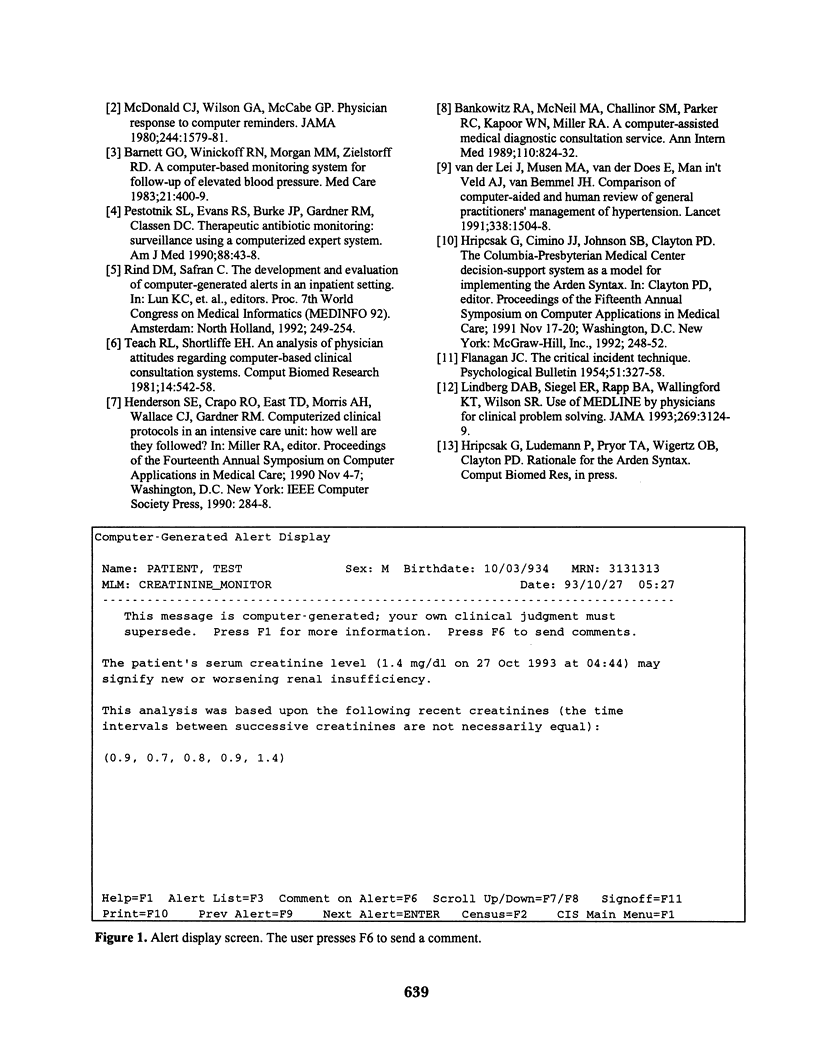
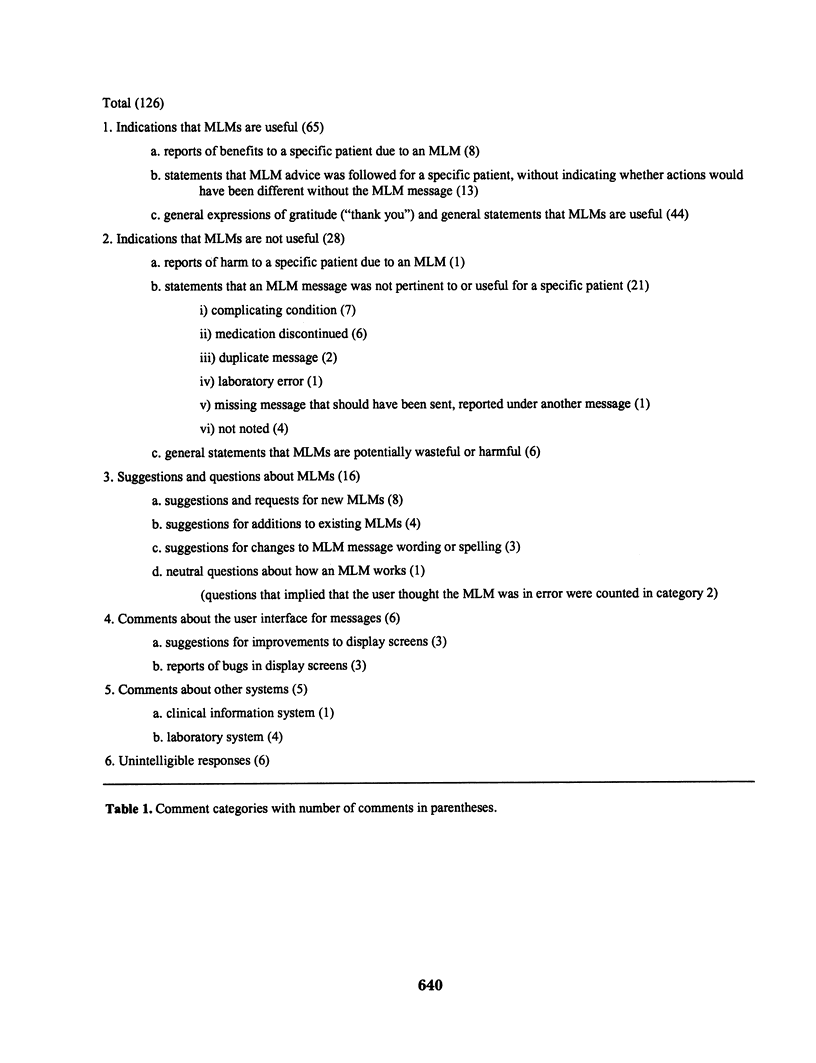
Selected References
These references are in PubMed. This may not be the complete list of references from this article.
- Bankowitz R. A., McNeil M. A., Challinor S. M., Parker R. C., Kapoor W. N., Miller R. A. A computer-assisted medical diagnostic consultation service. Implementation and prospective evaluation of a prototype. Ann Intern Med. 1989 May 15;110(10):824–832. doi: 10.7326/0003-4819-110-10-824. [DOI] [PubMed] [Google Scholar]
- Barnett G. O., Winickoff R. N., Morgan M. M., Zielstorff R. D. A computer-based monitoring system for follow-up of elevated blood pressure. Med Care. 1983 Apr;21(4):400–409. doi: 10.1097/00005650-198304000-00003. [DOI] [PubMed] [Google Scholar]
- FLANAGAN J. C. The critical incident technique. Psychol Bull. 1954 Jul;51(4):327–358. doi: 10.1037/h0061470. [DOI] [PubMed] [Google Scholar]
- Lindberg D. A., Siegel E. R., Rapp B. A., Wallingford K. T., Wilson S. R. Use of MEDLINE by physicians for clinical problem solving. JAMA. 1993 Jun 23;269(24):3124–3129. [PubMed] [Google Scholar]
- McDonald C. J., Wilson G. A., McCabe G. P., Jr Physician response to computer reminders. JAMA. 1980 Oct 3;244(14):1579–1581. [PubMed] [Google Scholar]
- Pestotnik S. L., Evans R. S., Burke J. P., Gardner R. M., Classen D. C. Therapeutic antibiotic monitoring: surveillance using a computerized expert system. Am J Med. 1990 Jan;88(1):43–48. doi: 10.1016/0002-9343(90)90126-x. [DOI] [PubMed] [Google Scholar]
- Teach R. L., Shortliffe E. H. An analysis of physician attitudes regarding computer-based clinical consultation systems. Comput Biomed Res. 1981 Dec;14(6):542–558. doi: 10.1016/0010-4809(81)90012-4. [DOI] [PubMed] [Google Scholar]
- van der Lei J., Musen M. A., van der Does E., Man in 't Veld A. J., van Bemmel J. H. Comparison of computer-aided and human review of general practitioners' management of hypertension. Lancet. 1991 Dec 14;338(8781):1504–1508. doi: 10.1016/0140-6736(91)92311-o. [DOI] [PubMed] [Google Scholar]


